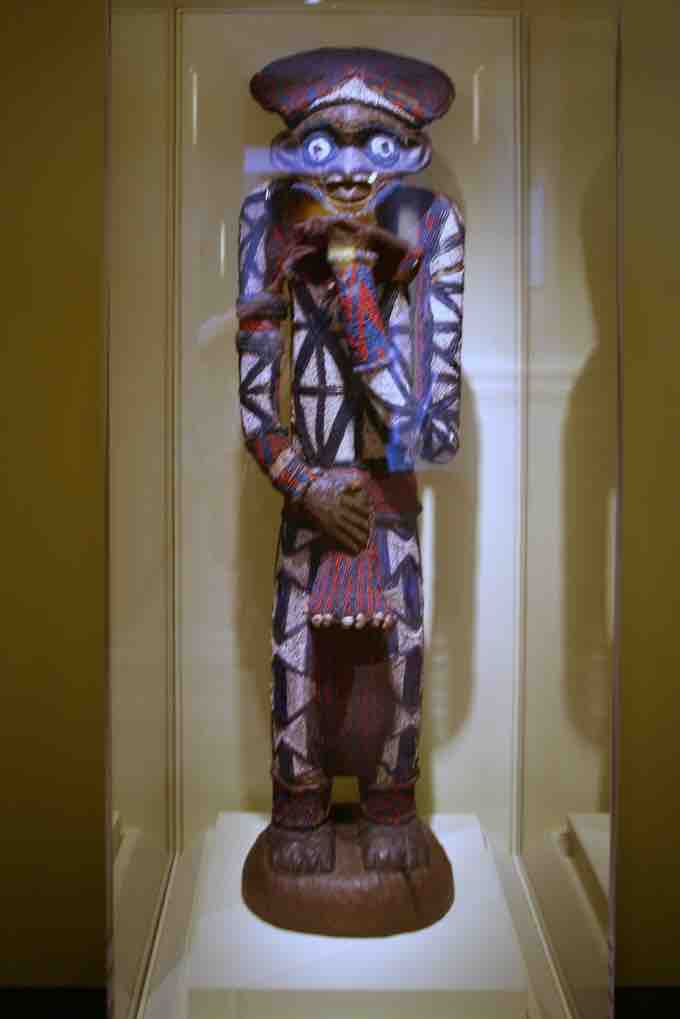Background: Bamum
The Bamum people are a Bantu ethnic group of Cameroon with around 215,000 members. The pre-colonial kingdom of Bamum (1394–1884) was a West African state in what is now northwest Cameroon. The Mbum, a part-Bantu ethnic group from northeast Cameroon, founded the kingdom at the end of the 14th century; its capital was the ancient walled city of Fumban.
The German Empire claimed the territory as the colony of Kamerun in 1884 and began a steady push inland. They initiated projects to improve the colony's infrastructure, relying on a harsh system of forced labor. With the defeat of Germany in World War I, Kamerun became a League of Nations mandate territory and was split into French Cameroun and British Cameroons in 1919. France integrated the economy of Cameroun with that of France and improved the infrastructure with capital investments, skilled workers, and continued forced labor.
Bamum Culture and Art
The Bamum people have an indigenous writing system known as Bamum script or Shu Mom. The script was developed by Sultan Ibrahim Njoya in 1896 and is taught in Cameroon by the Bamum Scripts and Archives Project. Little is known about the Bamum Kingdom's material and social culture during its existence. Originally, the language of state in the Bamum kingdom was that of the Tikar. This apparently did not last long, and the language of the conquered, Mben, was adopted.
Royal Cloth
The Bamum developed an extensive artistic culture at their capital of Fumban at the beginning of the 20th century. During the reign of Njoya, six dye pits containing various colors were maintained. The Bamum also imported indigo-dyed raffia-sewn cloth from the Hausa to be used as royal cloth. This royal cloth was called Ntieya, and Hausa craftsmen were kept at palace workshops to supply nobles and teach the art of dyeing. At the same time, during the 19th and early 20th century, Bamum artists created splendid beaded sculptures for the royal court. Colorful beadwork attached to a fabric base covers most of the carved wooden figures.

Bamum Sculpture
This life-size male figure from the kingdom of Bamum in Cameroon is a visually compelling example of the splendid beaded sculptures Bamum artists created for the royal court in the 19th and early 20th centuries.